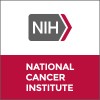
Low-Dose Total Body Irradiation and Donor Peripheral Blood Stem Cell Transplant Followed by Donor...
Adult Nasal Type Extranodal NK/T-cell LymphomaAnaplastic Large Cell Lymphoma34 moreThis pilot clinical trial studies low-dose total body irradiation and donor peripheral blood stem cell transplant followed by donor lymphocyte infusion in treatment patients with non-Hodgkin lymphoma, chronic lymphocytic leukemia, or multiple myeloma. Giving total-body irradiation before a donor peripheral blood stem cell transplant helps stop the growth of cells in the bone marrow, including normal blood-forming cells (stem cells) and cancer cells. When healthy stem cells from a donor are infused into the patient they may help the patient's bone marrow make stem cells, red blood cells, white blood cells, and platelets. Once the donated stem cells begin working, the patient's immune system may see the remaining cancer cells as not belonging in the patient's body and destroy them. Giving an infusion of the donor's white blood cells (donor lymphocyte infusion) may boost this effect.

Fludarabine and Total-Body Irradiation Followed By Donor Stem Cell Transplant and Cyclosporine and...
Accelerated Phase Chronic Myelogenous LeukemiaAcute Undifferentiated Leukemia181 moreThis clinical trial studies the side effects and best dose of giving fludarabine and total-body irradiation (TBI) together followed by a donor stem cell transplant and cyclosporine and mycophenolate mofetil in treating human immunodeficiency virus (HIV)-positive patients with or without cancer. Giving low doses of chemotherapy, such as fludarabine, and TBI before a donor bone marrow or peripheral blood stem cell transplant helps stop the growth of cancer or abnormal cells and helps stop the patient's immune system from rejecting the donor's stem cells. The donated stem cells may replace the patient's immune cells and help destroy any remaining cancer cells (graft-versus-tumor effect). Sometimes the transplanted cells from a donor can also make an immune response against the body's normal cells. Giving cyclosporine (CSP) and mycophenolate mofetil (MMF) after the transplant may stop this from happening.

Imatinib Mesylate in Treating Patients With Advanced Cancer and Liver Dysfunction
Accelerated Phase Chronic Myelogenous LeukemiaAcute Undifferentiated Leukemia84 moreDrugs used in chemotherapy use different ways to stop cancer cells from dividing so they stop growing or die. Phase I trial to study the effectiveness of imatinib mesylate in treating patients who have advanced cancer and liver dysfunction

Photodynamic Therapy Using Silicon Phthalocyanine 4 in Treating Patients With Actinic Keratosis,...
LymphomaNon-melanomatous Skin Cancer1 moreRATIONALE: Photodynamic therapy uses a drug that becomes active when it is exposed to a certain kind of light. When the drug is active, tumor cells are killed. Photodynamic therapy using silicon phthalocyanine 4 may be effective against skin cancer. PURPOSE: This phase I trial is studying the side effects and best dose of photodynamic therapy using silicon phthalocyanine 4 in treating participants with actinic keratosis, Bowen's disease, skin cancer, or stage I or stage II mycosis fungoides.

Safety and Efficacy of Nitrogen Mustard in Treatment of Mycosis Fungoides
Mycosis FungoidesThis study will evaluate the efficacy, tolerability and safety of the topical application of mechlorethamine (MCH) formulations in patients with stage I or IIA mycosis fungoides (MF).

Alemtuzumab in Treating Patients With Relapsed or Refractory Advanced Mycosis Fungoides or Sézary...
LymphomaRATIONALE: Monoclonal antibodies such as alemtuzumab can locate tumor cells and either kill them or deliver tumor-killing substances to them without harming normal cells. PURPOSE: This phase II trial is studying how well alemtuzumab works in treating patients with relapsed or refractory advanced mycosis fungoides or Sézary syndrome.

FLASH [Fluorescent Light Activated Synthetic Hypericin] Clinical Study: Topical SGX301 (Synthetic...
Cutaneous T-Cell LymphomaTo evaluate the use of SGX301, a topical photosensitizing agent, to treat patients with patch/plaque phase cutaneous T-cell lymphoma (mycosis fungoides).

Bendamustine Hydrochloride, Etoposide, Dexamethasone, and Filgrastim For Peripheral Blood Stem Cell...
Adult Nasal Type Extranodal NK/T-cell LymphomaAnaplastic Large Cell Lymphoma27 moreThis phase II trial is studying how well giving bendamustine hydrochloride, etoposide, dexamethasone, and filgrastim together for peripheral stem cell mobilization works in treating patients with refractory or recurrent lymphoma or multiple myeloma. Giving chemotherapy, such as bendamustine hydrochloride, etoposide, and dexamethasone, before a peripheral stem cell transplant stops the growth of cancer cells by stopping them from dividing or killing them. Giving colony-stimulating factors, such as filgrastim, and certain chemotherapy drugs helps stem cells move from the bone marrow to the blood so they can be collected and stored

Deferasirox for Treating Patients Who Have Undergone Allogeneic Stem Cell Transplant and Have Iron...
Iron OverloadAccelerated Phase Chronic Myelogenous Leukemia102 moreRATIONALE: Low dose deferasirox may be safe and effective in treating patients who have undergone hematopoietic stem cell transplant and have iron overload. PURPOSE: This pilot clinical trial studies safety and tolerability of deferasirox in hematopoietic stem cell transplant recipients who have iron overload. Effect of low dose deferasirox on labile plasma iron is also examined.

Pembrolizumab and Total Skin Electron Beam Radiotherapy in Mycosis Fungoides and Sézary Syndrome...
Cutaneous T-Cell LymphomasHypothesis: Addition of low dose TSEBT to debulk MF/SS either before or during checkpoint blockade with anti-PD-1 pembrolizumab monoclonal antibody therapy will be safe and well tolerated. Primary Objective: • To determine the maximum tolerated dose (MTD) for the combination of total skin electron beam therapy (TSEBT) and pembrolizumab regimen. Secondary Objectives: To determine the preliminary efficacy of the combination of TSEBT with pembrolizumab. To determine the impact on patient-reported health-related quality of life outcomes.
